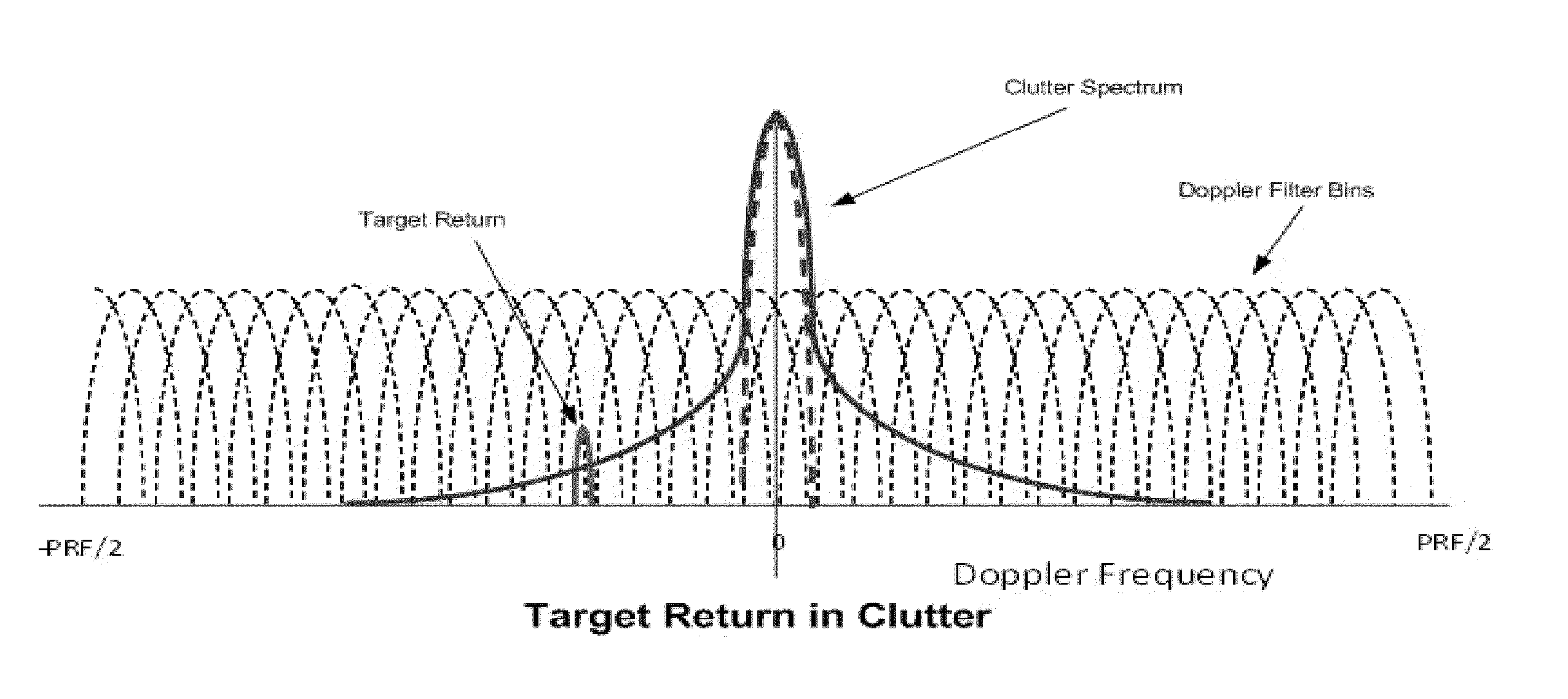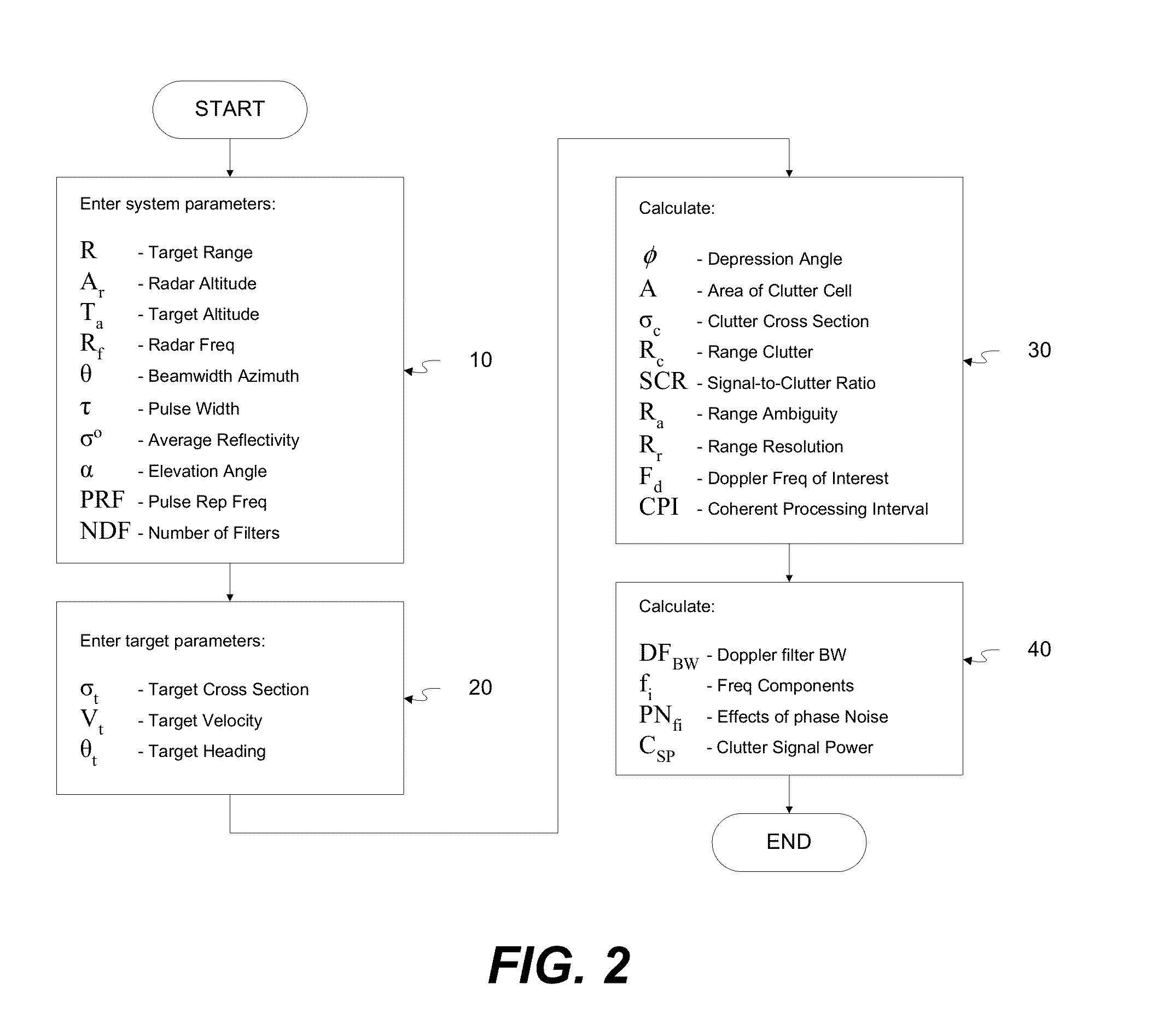Phase noise simulation model for pulse doppler radar target detection
- Summary
- Abstract
- Description
- Claims
- Application Information
AI Technical Summary
Benefits of technology
Problems solved by technology
Method used
Image
Examples
Embodiment Construction
[0019]Pulse Doppler signal processing generally involves implementing the FFT algorithm in a signal processor, which develops a bank of filters, extending from −PRF / 2 to +PRF / 2 (PRF being the pulse repetition frequency). The target velocity determines the Doppler bin in which the target will be found. The stationary surface clutter (land or sea) will be in a different Doppler filter, so the target and clutter can be separated, even though the clutter signal may be much larger than the target signal (see FIG. 1). Not only does the Doppler filter allow the system to separate low velocity returns, which include most ground and sea clutter, but the system can also determine the target velocity. The received signal from each bin is collected and placed into a matrix for processing through the appropriate signal processing conditions and the results presented to an operator of the radar system. The system of Doppler filter bins and constant false alarm rate (CFAR) adaptive thresholds dete...
PUM
 Login to View More
Login to View More Abstract
Description
Claims
Application Information
 Login to View More
Login to View More - R&D
- Intellectual Property
- Life Sciences
- Materials
- Tech Scout
- Unparalleled Data Quality
- Higher Quality Content
- 60% Fewer Hallucinations
Browse by: Latest US Patents, China's latest patents, Technical Efficacy Thesaurus, Application Domain, Technology Topic, Popular Technical Reports.
© 2025 PatSnap. All rights reserved.Legal|Privacy policy|Modern Slavery Act Transparency Statement|Sitemap|About US| Contact US: help@patsnap.com



